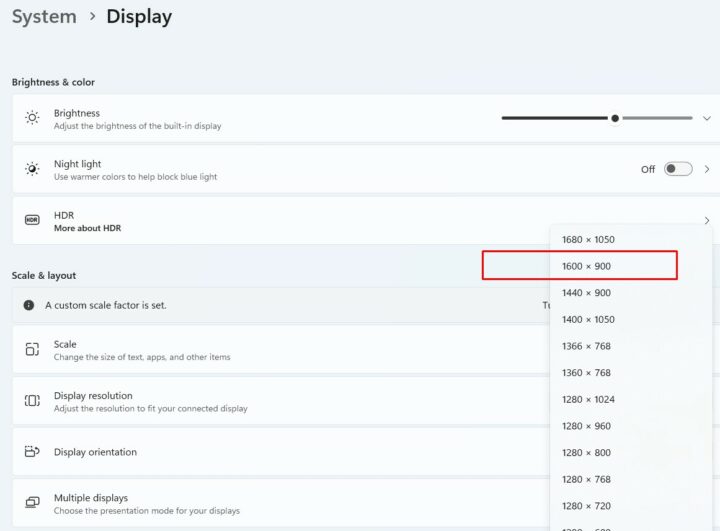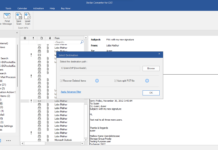In the realm of laptop and desktop screens, resolution plays a critical role in determining the quality and clarity of the display. Among various display screen resolutions available, the 1600 x 900 resolution display has carved out a niche for itself, especially in mid-range laptops and desktop monitors.
This resolution, often referred to as HD+ or WXGA++, offers a balance of performance, power efficiency, and visual quality. In today’s PC tech insight, we will delve into the specifics of the 1600 x 900 resolution pixels, exploring why it has gained popularity and continues to be a preferred choice for many users.
What is 1600 x 900 Resolution?

A screen resolution of 1600 x 900 means the display has 1600 pixels horizontally and 900 pixels vertically. This results in a total of 1,440,000 pixels. This resolution is classified as HD+ (High Definition Plus), offering a step up from standard HD (1366 x 768) but not as resource-intensive as Full HD (1920 x 1080).
Why is 1600 x 900 Display Popular?
Here are some of the reasons why the 1600 by 900 screen resolution display is popular among laptop and desktop PC users online and offline:
1. Balanced Pixel Density
Pixel density, measured in pixels per inch (PPI), affects the clarity and sharpness of a display. For screens ranging from 15 to 19 inches, a 1600 x 900 resolution provides a comfortable viewing experience without straining the eyes. Text and images are clear and sharp, making it suitable for both casual and professional use.
2. Cost-Effectiveness
Producing displays with a 1600 x 900 resolution is generally less expensive than manufacturing Full HD or higher-resolution screens. This cost saving is passed on to consumers, making devices with this resolution more affordable. This is particularly appealing to budget-conscious buyers who still want a decent visual experience.
3. Performance Efficiency
Running a display at 1600 x 900 resolution requires less graphical processing power compared to higher resolutions. This means laptops and desktops with mid-range graphics hardware can still deliver smooth performance. Users can enjoy everyday tasks like web browsing, document editing, and multimedia playback without needing high-end hardware.
4. Better Battery Life
For laptops, a 1600 x 900 resolution can contribute to better battery life. Lower resolution screens consume less power, and the reduced demand on the graphics processing unit (GPU) means the overall system power consumption is lower. This is particularly beneficial for ultrabooks and other portable devices where battery life is crucial.
5. Adequate Screen Real Estate
The 1600 x 900 resolution offers more screen real estate than the lower 1366 x 768 resolution, providing enough space for multitasking. Users can have multiple windows open side by side without feeling cramped. This balance between workspace and readability enhances productivity.
6. Gaming and Multimedia
While not the top choice for hardcore gamers or multimedia professionals, the 1600 x 900 resolution is sufficient for casual gaming and watching HD content. It allows for a good gaming experience on less powerful hardware and ensures HD videos look clear and vibrant.
Comparison with Other Resolutions
1366 x 768
This resolution is standard for many entry-level laptops and older desktops. It offers less screen real estate and lower visual clarity compared to 1600 x 900. Upgrading to 1600 x 900 provides a noticeable improvement in image quality and workspace.
1920 x 1080 (Full HD)
Full HD offers better image clarity and more screen real estate than 1600 x 900 but at a higher cost and greater demand on hardware. For users who do not require the extra pixels for professional work or high-end gaming, 1600 x 900 offers a more cost-effective and power-efficient alternative.
2560 x 1440 and Higher
Higher resolutions like 2560 x 1440 (Quad HD) and 3840 x 2160 (4K) provide superior image quality and more screen space but come with significantly higher costs and hardware requirements. These resolutions are ideal for professionals in graphic design, video editing, and gaming enthusiasts with powerful systems. For the average user, the benefits of such high resolutions may not justify the additional expense and power consumption.
Practical Applications

Everyday Use
For everyday tasks such as web browsing, office work, and streaming videos, the 1600 x 900 resolution is more than sufficient. It provides clear text, vibrant images, and enough space to comfortably work with multiple applications simultaneously.
Education and Work
In educational and professional settings, 1600 x 900 is popular for its balance of clarity and workspace. It allows students and professionals to work efficiently without needing high-end hardware, making it a practical choice for school and office environments.
Casual Gaming and Multimedia
For casual gamers and multimedia consumers, 1600 x 900 offers a satisfactory experience. It supports HD video playback and allows for decent gaming performance on mid-range systems. While it may not provide the immersive experience of higher resolutions, it is a good compromise for those with limited budgets.
Future of 1600 x 900 Resolution
Emerging Trends
While higher resolutions are becoming more common, there is still significant demand for 1600 x 900 displays. As hardware becomes more powerful and cost-effective, improvements in display quality and performance at this resolution are likely. Additionally, advancements in display technology, such as OLED and micro-LED, could enhance the visual experience without requiring higher resolutions.
Sustainability
Lower resolutions like 1600 x 900 contribute to sustainability by reducing power consumption and extending the lifespan of devices. As the tech industry continues to focus on energy efficiency and environmental impact, this resolution could play a role in promoting more sustainable practices.
Conclusion
The 1600 x 900 resolution remains popular for laptop and desktop screens due to its balanced pixel density, cost-effectiveness, performance efficiency, and adequate screen real estate. While it may not offer the high-definition clarity of 1080p or 4K, it provides a practical and affordable option for everyday use, casual gaming, and professional work. As technology advances, this resolution is likely to continue serving as a versatile and reliable choice for a wide range of users.
Whether you are a student, professional, or casual user, the 1600 x 900 resolution strikes a balance between performance and affordability, making it a popular choice in the ever-evolving landscape of display technology.

















